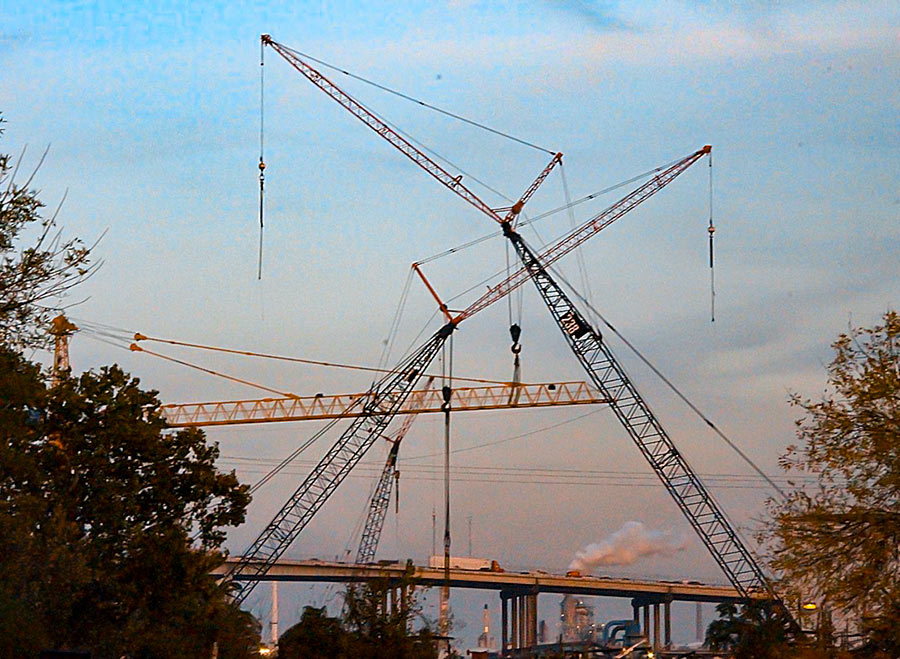
- NAR: Home Sales Spike in October as Houston, Florida Rebound from Hurricanes [Curbed]
- Houston Sees Highest Average Rental Rate in 2 Years, Finds Axiometrics [Houston Chronicle]
- Harris County Proposing Using 500-Year Floodplains Instead of 100-Year Floodplains for New Development [Houston Chronicle]
- Mayor Turner: Houston’s Share of Federal Funding for Harvey Recovery Not Enough [abc13]
- The ZIP Codes with the Most FEMA Applications After Hurricane Harvey [Houston Chronicle]
- Immigrant Reconstruction Workers Report Wage Theft After Harvey [Houston Public Media]
- Hurricane Harvey Forces Congressional Candidate in Meyerland To Relocate, Run in Different District [Houston Chronicle]
- Houston Law Firms Named to Consolidated Harvey Flood Cases [HBJ]
- The Union Kitchen Opens Fifth Location, on Wash Ave [HBJ]
- Houston’s Strong Retail Fundamentals Likely To Keep Growing Boutique Fitness Sector Competitive [Bisnow]
- Houston-Galveston Area Council Accepting Comments for Regional Transportation Plan Update [Houston Public Media]
- Buffalo Bayou Park Wins Urban Land Institute’s Global Award for Excellence [Houston Public Media]
- Recommendations for Making Houston a More Bird-Friendly City [The Urban Edge]
Photo of cranes near Brady’s Landing: John Atkinson
Headlines





Re: Immigrant workers
Posting this while in the liberal PNW on vacation.. Texas should ease up on immigration. Abbot and his views on sanctuary cities.. gross!
Re: The H-GAC transportation planning efforts. I think that there needs to be a recognition that change is coming. Rather than a highly-populous metro area shifting over to expensive capital outlays and rail-based transit that is billed as “rapid” (but that isn’t really), we are about to witness driverless taxis and driverless jitneys (carpooling) inobtrusively revolutionize the urban landscape. These technologies have the capability to price-in tolls and other fees; and the cost of using the vehicles themselves will be more expensive per mile in slow traffic. With these services being provided by competing private operators, it is likely that a wide range of affordable options will emerge for people of every socioeconomic strata and very nearly every location, rural or urban. To the extent that someone may be too poor to afford the service, providing them jitney vouchers for privately-operated services would no doubt be far less expensive than any other alternative. Very soon, I think that most local bus routes, and really anything that painfully slow — including Houston’s entire light rail system — will be rendered totally obsolete. The only good thing about it is that bus stops can serve larger jitney services and that the LRT tracks can be covered up and used in corridors where jitneys have a protected guideway and signal priority.
.
Car ownership will likely decline, but flat ribbons of pavement will be more important than ever for taxis, jitneys, delivery services, and yes…for cyclists and pedestrians (whom will transit safer streets than have ever before existed).
.
What does an urban area need in order to facilitate this new technology? Well, it’s hard to tell, exactly. What is likely to happen is that as both pecuniary and non-pecuniary transportation costs decrease and as on-demand delivery increases, that will favor people living and working in large metro areas with many employment opportunities and urban amenities; but it will also favor greenfield suburban development because those amenities are more accessible. OTOH, without the need to pay so much for transportation or parking, the cost of construction in an urban core may also be much lower, and improved access to suburban jobs that are not well-served by existing transit…well, that could also be a powerful boon for the most desirable neighborhoods. (Cost savings will come from higher capital utilization of vehicles, lower operating costs, lower parking requirements for homes and businesses, lower financing costs, lower auto insurance costs, improved safety, that people can use their time however they like rather than driving, and…that few people will see the fleet vehicles that they ride around in as extensions of their social identity, and so most vehicles will likely be utilitarian and cost-effective.) The greatest challenges (at least until vehicle-to-vehicle communications are worked out, which may take longer) will be to keep traffic moving on surface streets. Grade separations at major intersections and railroad tracks seem prudent. Greater care will have to be taken, I think, to preserve sight lines around corners. With a mind toward a future with technologies and needs that are hard to forecast, I would suggest the establishment of many continuous easements crisscrossing the metro area, with priorities given to those that can be laid out in a straight line; the width of these ROWs ought to be sufficient to accommodate four-lane toll roads.
.
With things going the way they are, it’s best to plan for the near-term future we can get a grip on and simply to hold our breath on ambitious technologies like Hyperloop or The Boring Co. rather than make huge expenditures on any other transportation mega projects. If those technologies do pan out, then we will need easements for them; if not, then we will probably still need easements for something. H-GAC also needs to work closely with the State government and other regions regarding freight rail corridors and future plans regarding commercial air travel. *If* true rapid intercity transportation ever becomes feasible, then all of the big cities in Texas should look into the development of a single very large airport in the general vicinity of the interconnect for those corridors. It would be the busiest and likely the best-connected airport in the world, and would be a massive boon for economic development throughout Texas. I would suggest that those corridors and that land ought to be identified sooner than later.
.
I know that this is frustrating for some people, to not be able to say that they know what a good plan for the long-term future even resembles anymore, and that so much of that plan is ‘wait and see’. But to me, that is what is prudent.
Party at HEB’s place!!!